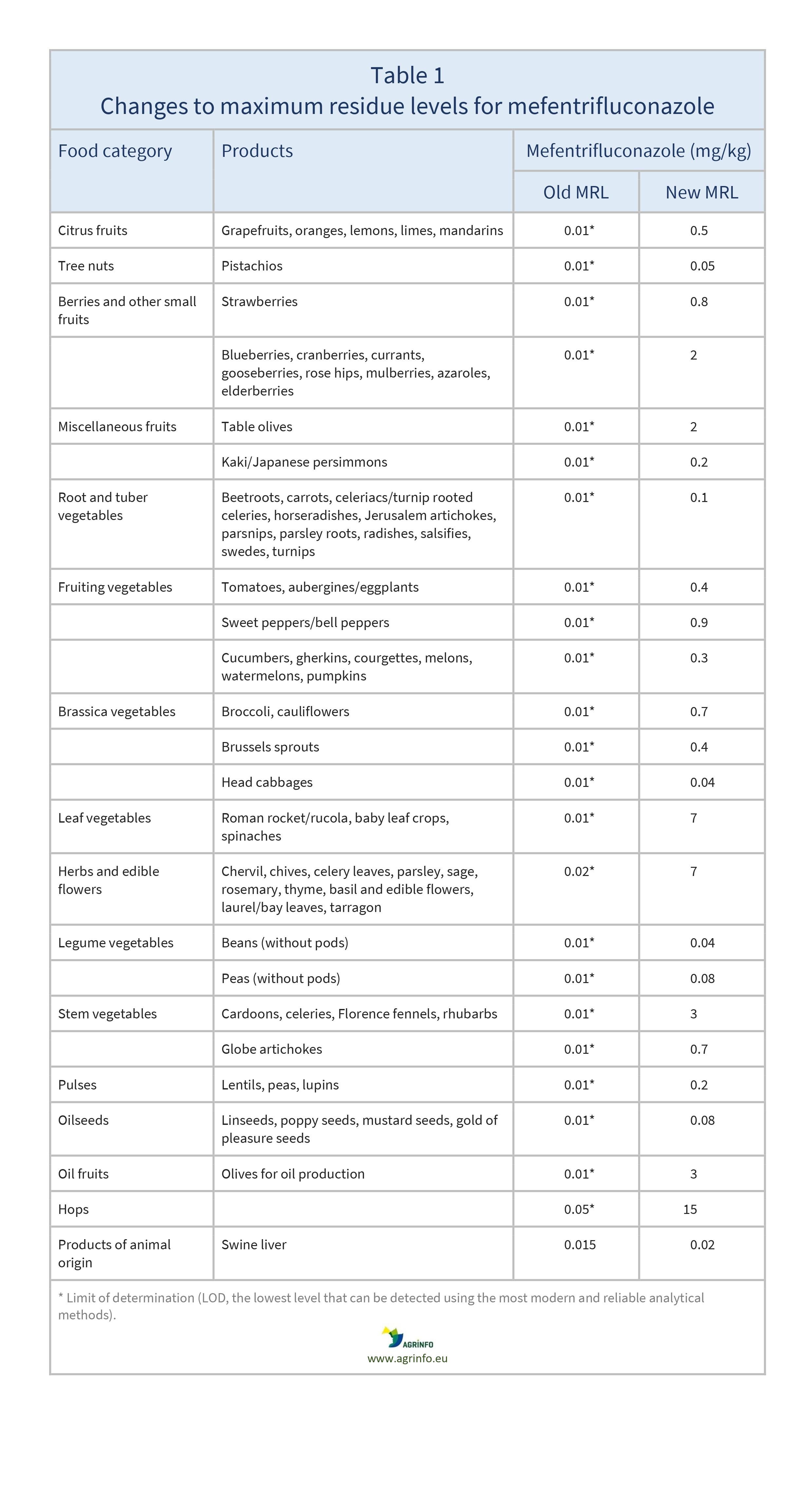Maximum residue levels for mefentrifluconazole
Published by AGRINFO on
EU raises MRLs for mefentrifluconazole on multiple products
Commission Regulation (EU) 2024/1078 of 15 April 2024 amending Annexes II and IV to Regulation (EC) No 396/2005 of the European Parliament and of the Council as regards maximum residue levels for azoxystrobin, flonicamid, isofetamid, mefentrifluconazole, metazachlor, pyrimethanil and quartz sand in or on certain products
Update
The EU has raised the maximum residue levels (MRLs) for mefentrifluconazole on multiple products.
Impacted Products
Grapefruits, oranges, lemons, limes, mandarins, pistachios, strawberries, blueberries, cranberries, currants, gooseberries, rose hips, mulberries, azaroles, elderberries, olives, kaki/Japanese persimmons, beetroots, carrots, celeriacs/ turnip rooted celeries, horseradishes, Jerusalem artichokes, parsnips, parsley roots, radishes, salsifies, swedes, turnips, tomatoes, aubergines/ eggplants, sweet peppers/ bell peppers, cucumbers, gherkins, courgettes, melons, watermelons, pumpkins, broccoli, cauliflowers, Brussels sprouts, head cabbages, Roman rocket/ rucola, baby leaf crops, spinaches, chervil, chives, celery leaves, parsley, sage, rosemary, thyme, basil and edible flowers, laurel/ bay leaves, tarragon, beans (without pods), peas (without pods), cardoons, celeries, Florence fennels, rhubarbs, globe artichokes, lentils, peas, lupins, hops, linseeds, poppy seeds, mustard seeds, gold of pleasure seeds, olives for oil production, swine liver
What is changing?
The EU has raised the MRLs for mefentrifluconazole on various fruits, vegetables, oilseeds/fruits, hops, and swine liver, as set out in Table 1.
Why?
Following a request to modify the MRLs for mefentrifluconazole on various products, EFSA (2023) concluded that the proposed amendments are unlikely to be a risk to consumer health. This does not include hazelnuts, beans, and soybeans, where insufficient data was submitted.
Timeline
The new MRLs will apply from 6 May 2024.
Background
MRLs are set in accordance with the rules set out in Regulation 396/2005. For information on current MRLs for other substances, please consult the EU Pesticide Residues database.
Resources
EFSA (2023) Modification of the existing maximum residue levels for mefentrifluconazole in various commodities. EFSA Journal, 21(9): 1–139.
Sources
Regulation 2024/1078 as regards maximum residue levels for azoxystrobin, flonicamid, isofetamid, mefentrifluconazole, metazachlor, pyrimethanil and quartz sand in or on certain products
Tables & Figures

Source: based on Regulation 2024/1078


